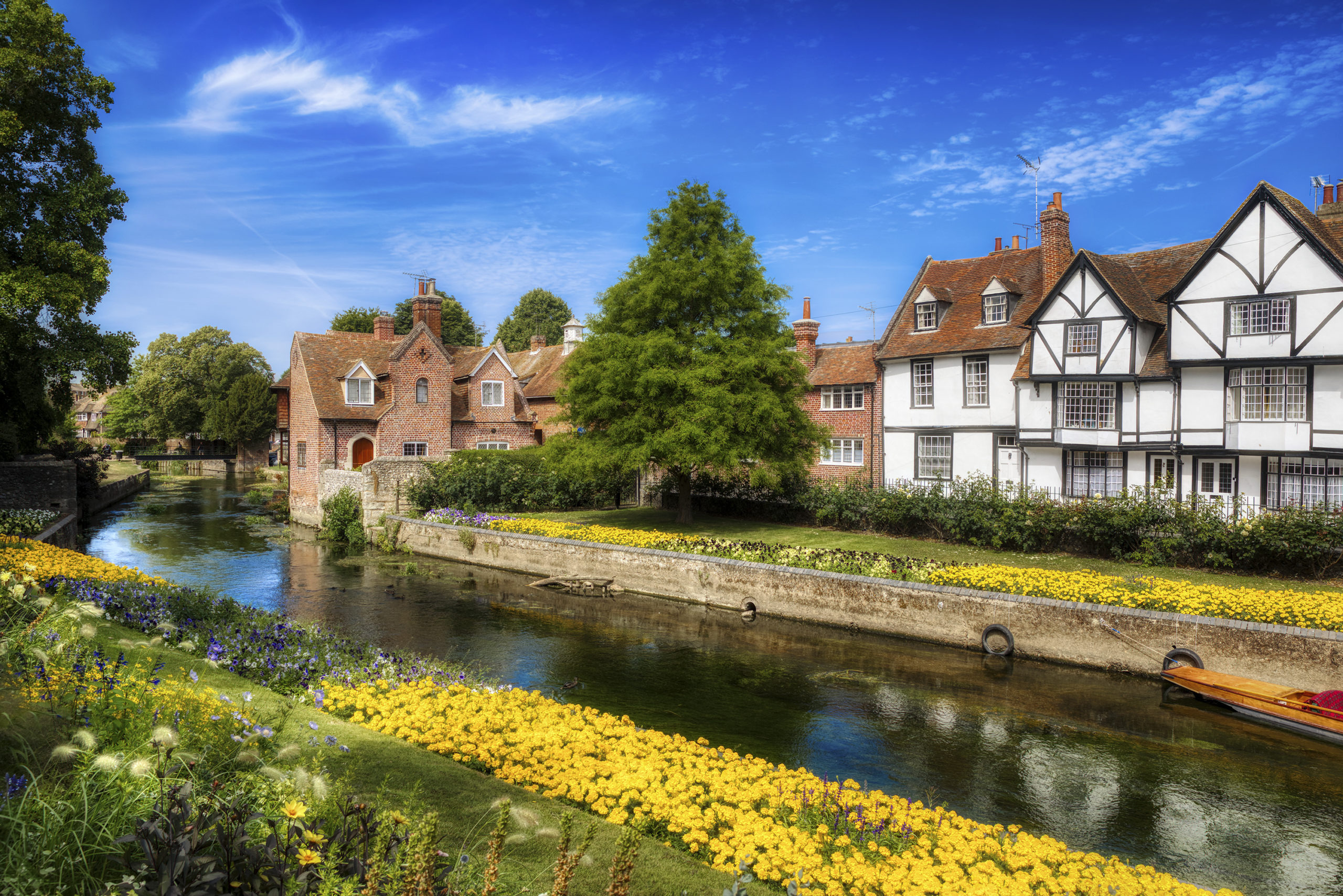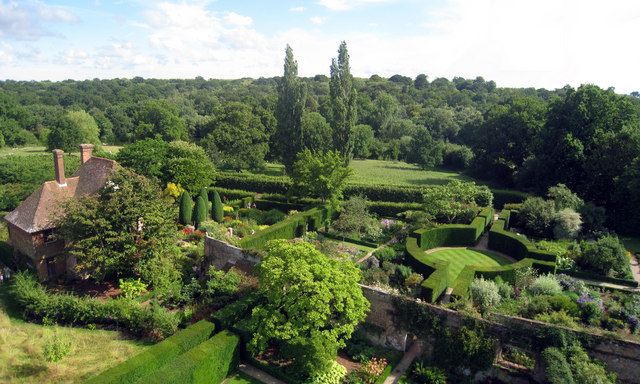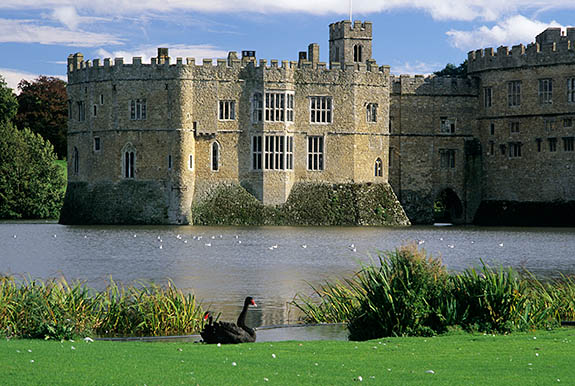The phrase 'Garden of England' has been synonymous with Kent for centuries, evoking images of lush orchards, hop gardens, and rolling countryside dotted with oast houses. This evocative nickname captures the essence of a county whose agricultural fertility and natural beauty have defined its character throughout history. But how did Kent come to earn this prestigious title? Was it simply a marketing slogan, or does it have genuine historical roots? This article explores the fascinating origins of Kent's most famous moniker, tracing its evolution from royal endorsement to cultural touchstone.
Royal Origins: Henry VIII and Kentish Cherries
The most widely accepted origin of Kent's 'Garden of England' nickname dates back to the Tudor period and is attributed to none other than King Henry VIII. Historical accounts suggest that the monarch was served a bowl of cherries grown in Kent and was so impressed by their quality that he ordered Britain's first commercial cherry orchard to be planted in Teynham, near Sittingbourne.
"It is Henry VIII who is said to have first called Kent the Garden of England. In his daughter Elizabeth's reign, William Lambarde wrote that 'In Kent is especially observed, that the country is beautiful with orchards, fruitful with gardens, and prosperous with rich fields.'" â Tenterden Museum historical records
This royal endorsement in the early 16th century marked the beginning of Kent's formal recognition as England's premier fruit-growing region. The king's appreciation of Kentish cherries was not merely a matter of personal taste but had significant economic implications. His decree to establish commercial orchards initiated what would become a cornerstone of Kent's agricultural identity for centuries to come.

Historic railway poster promoting Kent as the Garden of England (Art UK)
Perfect Growing Conditions: Why Kent?
Kent's claim to horticultural fame is no accident of history or mere royal whim. The county possesses a unique combination of geographical and climatic factors that have made it ideally suited for fruit cultivation and general agriculture for millennia:
Climate and Soil
Kent benefits from a mild maritime climate with fewer extremes of temperature than many other parts of England. This creates ideal growing conditions for a wide variety of fruits. The county also features a diverse range of soil types, including the chalk of the North Downs, which provides excellent drainage for fruit trees and hop plants, and the fertile loams of the Weald, which are perfect for arable farming.
Kent's position as the southeastern-most county in England means it typically receives more sunshine hours than other regions, creating the perfect conditions for ripening fruit. The varying aspects of its rolling landscape create microclimates that allow for different crops to thrive in close proximity to one another.
Water Resources
The county is blessed with numerous rivers and streams, including the Medway, Stour and Darent, providing natural irrigation. This abundance of water, combined with the generally reliable rainfall pattern, ensures that crops rarely suffer from drought â a crucial factor in the establishment of extensive orchards and market gardens.
Historical Development of Kent's Horticultural Heritage
Medieval Period
Well before Henry VIII's famous cherry tasting, Kent was already establishing itself as an agricultural powerhouse. Monastic houses played a crucial role in developing orchards and gardens during the medieval period. The Benedictine monks at Canterbury and Rochester were pioneering fruit cultivation techniques, introducing new varieties and methods brought from continental Europe.
Medieval Kent was also developing its hop industry, which would later become another defining feature of its agricultural landscape. By the 14th century, records show substantial fruit production across the county, with apples and pears being particularly important crops.
Tudor and Stuart Expansion
Following Henry VIII's royal endorsement, Kent's fruit industry expanded significantly during the Tudor and Stuart periods. The dissolution of the monasteries ironically accelerated horticultural development, as former church lands came into the hands of wealthy landowners who invested in commercial fruit production.
Richard Harris, a royal fruiterer to Henry VIII, is credited with introducing several cherry varieties to Kent, while skilled Flemish and Huguenot refugees brought advanced horticultural techniques when they settled in the county during the 16th and 17th centuries. These continental influences transformed Kent's fruit growing from a primarily subsistence activity to a commercial enterprise.

Historical postcard depicting Kent as the Garden of England (Flackley Ash Hotel)
Victorian Golden Age
The Victorian era marked the golden age of Kent's fruit industry. The expansion of railways in the 19th century revolutionised the transportation of fresh produce, allowing Kentish fruits to reach London markets quickly and in prime condition. This led to a massive expansion of commercial orchards across the county.
Victorian Kent saw the introduction of scientific approaches to horticulture, with new varieties being developed specifically for the county's growing conditions. The distinctive landscape of orchards and hop gardens became firmly established during this period, cementing the 'Garden of England' image in the national consciousness.
This was also the era when Kentish fruit production became closely associated with the annual rhythm of London life. The arrival of Kentish cherries in Covent Garden market was a celebrated seasonal event, and hop-picking holidays brought thousands of East End families to the county each autumn â further strengthening Kent's identity as London's garden.
Kent's Agricultural Diversity
While fruit orchards have been the most iconic element of Kent's agricultural landscape, the county's reputation as the 'Garden of England' rests on a much broader agricultural diversity:
Hop Gardens
Perhaps equally emblematic of Kent's rural landscape are its hop gardens. Hops have been grown in Kent since at least the 16th century, but the industry expanded dramatically in the 18th and 19th centuries to meet the demands of London's brewing industry. The distinctive oast houses, used for drying hops, remain one of Kent's most recognisable architectural features, even as many have been converted to residential use.
At its peak in the late 19th century, Kent produced around 70% of all hops grown in England. The hop gardens, with their tall poles and climbing bines, contributed significantly to the 'garden' appearance of the Kentish landscape.
Market Gardens and Soft Fruits
Beyond orchards and hop gardens, Kent became famous for its market gardens and soft fruit production. Strawberries from the Swanley area and raspberries from around Maidstone were particularly renowned. The fertile soils of north Kent supported extensive vegetable production, supplying London's growing population with fresh produce.
Arable Farming
The diversity of Kent's soils has always allowed for varied arable farming alongside its more famous fruit and hop production. The rich loams of the Weald and the chalk downs have supported grain cultivation for centuries, contributing to Kent's agricultural wealth.
Kent Today: Still the Garden of England?
The 20th and 21st centuries have brought significant changes to Kent's agricultural landscape. Many traditional orchards have been grubbed up, hop gardens have declined dramatically, and housing development has encroached on former agricultural land. In light of these changes, is Kent's title as the Garden of England still justified?
Modern Challenges
The post-war period saw a decline in traditional Kentish fruit growing as competition from imported fruits and changing consumer habits reduced demand for some varieties. The hop industry contracted sharply as brewers turned to cheaper imported hops and beer consumption patterns changed.
Urbanisation has been another significant challenge. Kent's proximity to London has made it a target for housing development, particularly in the northwest of the county. The expansion of towns like Maidstone, Ashford, and Tunbridge Wells has consumed agricultural land.
Climate change presents both challenges and opportunities for Kent's agriculture. While warmer temperatures may allow for new crops like vineyards to flourish, they also bring risks of extreme weather events and new pests and diseases.
Signs of Resilience and Renewal
Despite these challenges, there are encouraging signs that Kent's horticultural heritage remains vibrant:
- The Kent wine industry has expanded dramatically, with vineyards producing award-winning sparkling wines that rival champagne. Areas like Tenterden and the North Downs have proven ideal for viticulture.
- Specialist fruit production continues, with a focus on quality over quantity. Apple varieties like Discovery, Cox's Orange Pippin, and Bramley cooking apples remain important Kent crops.
- Farmers' markets and farm shops have proliferated across the county, creating new outlets for locally grown produce.
- A renewed interest in heritage varieties and traditional growing methods has led to the restoration of some traditional orchards.
- The distinctive landscapes of fruit trees and oast houses continue to define much of rural Kent, preserving its 'garden' appearance.
Kent's Agricultural Statistics
Despite changes in land use, agriculture remains significant in Kent:
- Kent still produces over 50% of England's cherries and apples
- The county boasts over 50 commercial vineyards covering more than 3,500 acres
- Nearly 70% of Kent's land area remains in agricultural use
- Kent has over 2,500 working farms
- The county produces approximately 30% of UK strawberries
Conclusion: A Title Still Earned
The title 'Garden of England' remains more than just a historical curiosity or tourism slogan for Kent. Though the county's agricultural landscape has evolved significantly since Henry VIII's time, Kent still maintains a distinctive horticultural character that sets it apart from other English counties.
The combination of fertile soils, favorable climate, and centuries of agricultural expertise continues to make Kent a special place for fruit cultivation and diverse farming. New agricultural enterprises like vineyards are writing the next chapter in Kent's horticultural story, while traditional orchards, though reduced in number, remain an important part of the county's landscape and identity.
What began as a royal compliment from Henry VIII has evolved into a defining characteristic of Kent's regional identity. Far from being merely a historical nickname, 'The Garden of England' continues to reflect Kent's enduring agricultural importance and its distinctive, verdant landscape. As the county adapts to the challenges of the 21st century, this horticultural heritage remains at the heart of what makes Kent special.
Whether viewing the apple blossom in spring, picking strawberries in summer, or witnessing the hop harvest in autumn, visitors to Kent today can still experience the sights, scents, and flavors that earned the county its famous epithet all those centuries ago. Kent remains, in many meaningful ways, England's garden.




